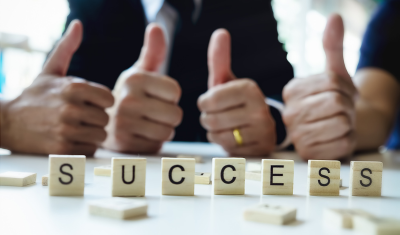B or B-2 License: Which One is Right for You?
Estimated Read Time: 4 minutes09-12-2023
Recently, the California State License Board (CSLB) created their first new classification in over a decade: the B-2 Residential Remodeling Classification. What’s the difference between the B and B-2 classifications? Are there any limitations with the B-2 classification? Why does California even need the B-2 classification? The Jet team has gathered all the details to understand this updated classification.
Key Differences

What Is a Class B Contractor?
According to the CSLB, “a general building contractor is a contractor whose principal contracting business is in connection with any structure built, being built, or to be built, for the support, shelter, and enclosure of persons, animals, chattels, or movable property of any kind, requiring in its construction the use of at least two unrelated building trades or crafts, or to do or superintend the whole or any part thereof.”
In simpler terms, a Class B contractor (or General Building Contractor) is a contractor who builds structures. The construction of these structures, whether commercial or residential, must involve at least two or more unrelated trades or crafts that either you or another licensed subcontractor perform. As a Class B contractor, you must also directly supervise the project.
B contractors are able to take primary contracts (or sub-contracts) for any framing or carpentry project, even if the project does not entail additional trades or crafts.
For primary contracts that do have additional trades needed, a Class B contractor can take the contract ONLY IF they meet at least one of these three conditions:
- The written contract includes two or more trades related to framing or carpentry.
- If the written contract only encompasses one trade, then the Class B contractor must hold that specific license classification. An example would be a Class B contractor receiving a contract with only house painting listed as the work to perform. In order to take this single-trade contract, the B contractor would need to have the C-33 (painting class) separately or include two additional trade jobs in the contract.
- If the Class B contractor hires subcontractors who hold the appropriate classifications that are needed.
Additional limitations to a Class B contractor classification include being prohibited from taking on any contracts involving Fire Protection or Well Drilling unless the contractor either has those specific classifications themselves or hires subcontractor(s) licensed with those classifications.

What Is a Residential Remodeling Contractor (Class B-2)?
A Class B-2 contractor, or a Residential Remodeling Contractor, is a licensed contractor who is restricted to only make changes to existing residential wood frame structures. In order for a Residential Remodeling contractor to take any projects or contracts, they must ensure the project involves at least three different trades or crafts, similar to that of a General B contractor.
Unlike Class B contractors, who need four years of framing or carpentry experience, a Residential Remodeling contractor only needs four years of journey-level home remodeling experience as their qualifying experience. A person gains journey-level experience after they have either completed an approved apprenticeship program or has enough hands-on experience in a specific trade to perform the work without any supervision. Applicants applying for an original contractor license are also able to substitute up to three years of this experience requirement with qualifying education.
This updated classification allows contractors with years of non-structural remodeling experience to get their contractor license with the CSLB. Now these newly licensed contractors can legally take on larger projects and avoid the risk of being fined for being unlicensed. As home remodeling projects are so common and largely handled by inexperienced home owners, it can be easy to forget that you must have a license to perform any contracting work that exceeds $500 (at least in California)!
A Residential Remodeling contractor can accept kitchen and bathroom remodeling projects, such as cabinet replacement, new paint and flooring, and even the replacement of electrical or plumbing fixtures.
Like Class B contractors, Residential Remodeling contractors are subject to their own classification limitations too. Residential Remodeling contractors cannot make any type of structural changes to the existing structure or perform mechanical, electrical, or plumbing work behind the wall. They also cannot install or replace HVAC systems. Lastly, Residential Remodeling contractors are limited to working on existing residential wood frame structures, which means no working on commercial buildings.
Why Do We Need the Distinction?
With housing prices at an all-time-high, it makes sense that most homeowners are opting to remodel their current homes instead of purchasing new builds. Moreover, those who are actually in the market are considering buying fixer-upper homes rather than buying turnkey. In spite of the continually growing availability of remodeling jobs, California maintains the low limit allowance regarding construction work performed.
In recognition of the fact that no home renovation project in California comes with a price tag under $500, an attempted bill aimed at raising this limit was introduced but failed to be approved by the California Assembly. Consequently, the alternative approach was to create the B-2 contractor classification—enabling handymen to lawfully undertake home remodeling exceeding $500 without ramifications.


